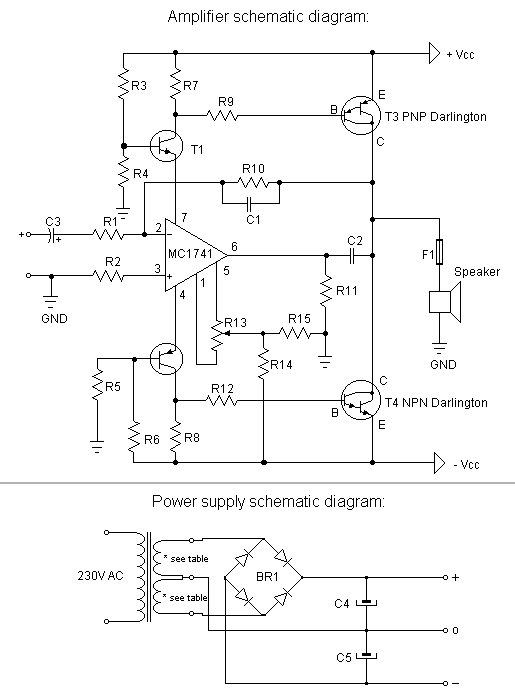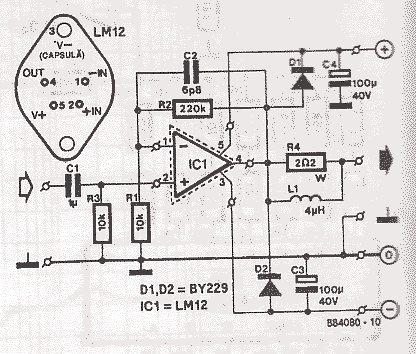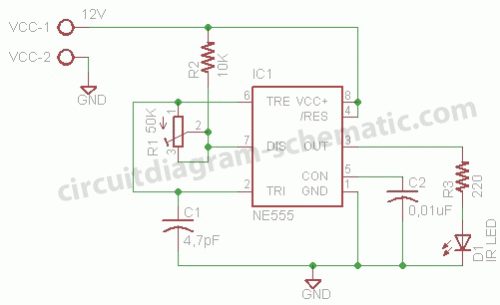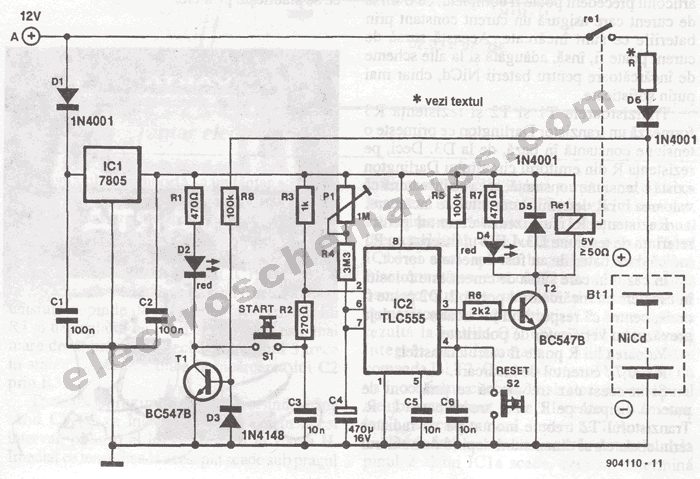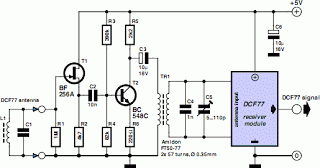
Voltage-controlled amplifier or tremolo circuit
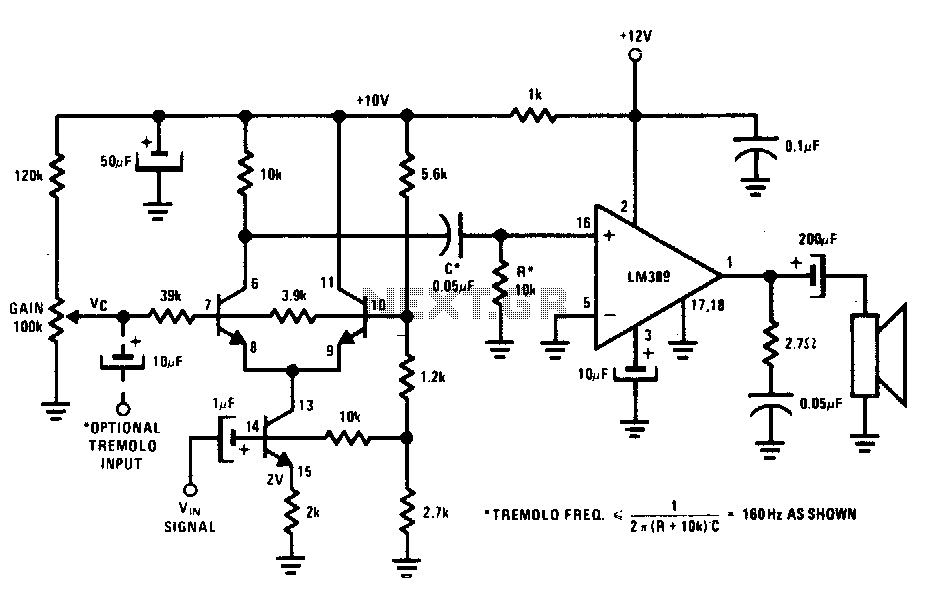
The transistors create a differential pair with an active current-source tail. This configuration, referred to as a variable-transconductance multiplier, produces an output that is proportional to the product of the two input signals. The multiplication effect arises from the dependence of the transistor transconductance on the emitter current bias. Tremolo applications, which involve amplitude modulation of an audio frequency by a sub-audio oscillator typically ranging from 5 to 15 Hz, necessitate the introduction of the low-frequency oscillator signal into the optional input provided. The gain control potentiometer may be adjusted to achieve the desired modulation depth.
The described circuit employs a differential pair of transistors, which are pivotal in analog signal processing, particularly in applications that require precise signal multiplication. In this configuration, the active current-source tail provides a stable biasing condition, which enhances the linearity and performance of the transistors. The variable-transconductance multiplier operates by dynamically adjusting the transconductance of the transistors based on the emitter current, thereby allowing for effective multiplication of the input signals.
In tremolo applications, the circuit integrates an oscillator operating at low frequencies, typically between 5 Hz and 15 Hz, to modulate the amplitude of an audio signal. The optional input facilitates the coupling of this low-frequency oscillator signal into the differential pair, enabling the desired modulation effect. The gain control potentiometer serves as a critical component, allowing for fine-tuning of the modulation depth, ensuring that the audio output achieves the intended tremolo effect without distortion or loss of signal integrity.
Overall, this circuit design is essential for achieving high-fidelity audio modulation, leveraging the properties of differential pairs and current-source configurations to deliver accurate and responsive signal processing.The transistors form a differential pair with an active current-source tail. This configuration, known technically as a variable-transconductance multiplier, has an output proportional to the product of the two input signals. Multiplication occurs due to the dependence of the transistor transconductance on the emitter current bias
Tremolo (amplitude modulation of an audio frequency by a sub-audio oscillator—normally 5-15 Hz) applications require feeding the low frequency oscillator signal into the optional input shown. The gain control pot maybe set for optimum depth.
The described circuit employs a differential pair of transistors, which are pivotal in analog signal processing, particularly in applications that require precise signal multiplication. In this configuration, the active current-source tail provides a stable biasing condition, which enhances the linearity and performance of the transistors. The variable-transconductance multiplier operates by dynamically adjusting the transconductance of the transistors based on the emitter current, thereby allowing for effective multiplication of the input signals.
In tremolo applications, the circuit integrates an oscillator operating at low frequencies, typically between 5 Hz and 15 Hz, to modulate the amplitude of an audio signal. The optional input facilitates the coupling of this low-frequency oscillator signal into the differential pair, enabling the desired modulation effect. The gain control potentiometer serves as a critical component, allowing for fine-tuning of the modulation depth, ensuring that the audio output achieves the intended tremolo effect without distortion or loss of signal integrity.
Overall, this circuit design is essential for achieving high-fidelity audio modulation, leveraging the properties of differential pairs and current-source configurations to deliver accurate and responsive signal processing.The transistors form a differential pair with an active current-source tail. This configuration, known technically as a variable-transconductance multiplier, has an output proportional to the product of the two input signals. Multiplication occurs due to the dependence of the transistor transconductance on the emitter current bias
Tremolo (amplitude modulation of an audio frequency by a sub-audio oscillator—normally 5-15 Hz) applications require feeding the low frequency oscillator signal into the optional input shown. The gain control pot maybe set for optimum depth.
